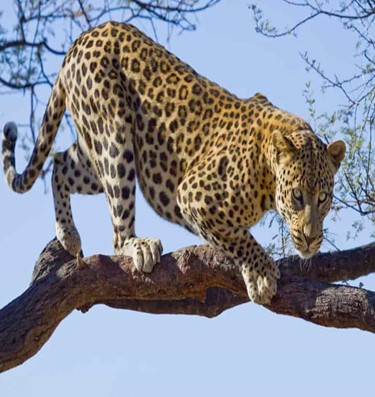- Courses
- GS Full Course 1 Year
- GS Full Course 2 Year
- GS Full Course 3 Year
- GS Full Course Till Selection
- Answer Alpha: Mains 2025 Mentorship
- MEP (Mains Enrichment Programme) Data, Facts
- Essay Target – 150+ Marks
- Online Program
- GS Recorded Course
- Polity
- Geography
- Economy
- Ancient, Medieval and Art & Culture AMAC
- Modern India, Post Independence & World History
- Environment
- Governance
- Science & Technology
- International Relations and Internal Security
- Disaster Management
- Ethics
- NCERT Current Affairs
- Indian Society and Social Issue
- NCERT- Science and Technology
- NCERT - Geography
- NCERT - Ancient History
- NCERT- World History
- NCERT Modern History
- CSAT
- 5 LAYERED ARJUNA Mentorship
- Public Administration Optional
- ABOUT US
- OUR TOPPERS
- TEST SERIES
- FREE STUDY MATERIAL
- VIDEOS
- CONTACT US
INTERNATIONAL LEOPARD DAY 2023
INTERNATIONAL LEOPARD DAY 2023
05-05-2023


Latest Context
The Cape Leopard Trust (CLT), an active predator conservation working group, unveiled a new portal dedicated to leopards on International Leopard Day (May 3, 2023) to promote and celebrate leopards globally. The portal was launched at the Global Leopard Conference.
Features of Leopard
- Leopards are nocturnal, elusive creatures whose size and colouring vary according to their habitat. They are great climbers and hide in trees, where they hide their prey to avoid competition.
- Scientific Name: Panthera pardus
- Geographical Extent: Leopards are cats, and they can be found in Asia, Southern Russia, sub-Saharan Africa, and the Indian subcontinent. The leopard species known as the Indian leopard (Panthera pardus fusca) is found throughout the Indian subcontinent.
- Habitat: Leopards are highly flexible when it comes to their habitat needs and food requirements compared to other large carnivores, and they can be found in:
- Agro-pastoral landscapes.
- Plantations.
- Near human habitation (both rural and urban).
- Population in India: According to the MoEF&CC report "Status of Leopards in India, 2018," there has been a "60% increase in the population count of leopards in India from 2014 estimates."
- The estimated leopard population in 2014 was around 8,000, but it is now 12,852.
- The largest number of leopards have been estimated in Madhya Pradesh (3,421) followed by Karnataka (1,783) and Maharashtra (1,690).
- Threat:
- Habitat loss.
- Poaching.
- Human-wildlife conflict.
- Protection Status:
- IUCN Red List: Vulnerable
- CITES: Appendix I
- Wildlife Protection Act 1972: Schedule I
- Human-Leopard Conflict: The Kashmir Valley's Srinagar, Assam's Brahmaputra Valley, Gujarat's Gir National Park, and southern Tamil Nadu's Kalakkad-Mundanthurai Tiger Reserve are among the places where leopard-human conflicts frequently occur.



